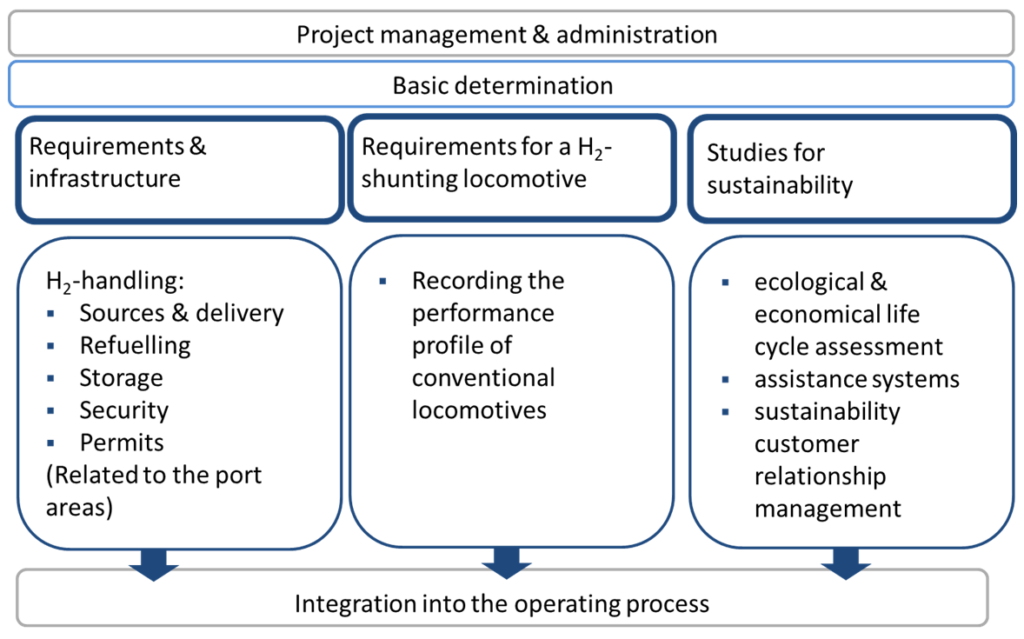WP 1: Cross-work package issues
The work package focuses on internal and external communication, project coordination and administration, as well as monitoring the progress of the project. The project is managed by bremenports.
WP 2: Determining the basics
All project partners determine the corresponding basics for their task areas and work packages. Parameters and requirements are defined in order to evaluate process structures and operating conditions. The goal is a holistic approach at the port district level, which can be transferred and scaled to other port and industrial locations as desired.

WP 3: Logistical requirements
The logistical requirements for a possible use of hydrogen-powered shunting locomotives in the ports of Bremerhaven and Hamburg are defined. The aim is to specify the scope and number of necessary measures.
WP 4: Recording the performance profile of the locomotives
The requirements for the locomotive to be developed are to be specified by recording the performance parameters. To this end, parameters (load profile, power peaks, braking processes, fuel consumption, etc.) will be taken from a conventional locomotive in the study areas of the ports of Hamburg and Bremerhaven as real-time data.
The data and results form the basis for economic and life cycle assessment studies (see WP 8 and WP 9).
WP 5: Specifications of the technical requirements for the locomotive for use in the port area
The project partner Alstom is planning to develop a hydrogen-powered shunting locomotive. The use of the locomotive in the overseas port in Bremerhaven and in Hamburg is seen as a real environment that can also be found at other locations, which is why the requirements are included here as an example and can be replicated elsewhere.
WP 6: Assistance systems to reduce power peaks
Within the project, the potentials of assistance systems that have a positive effect on employee motivation, costs, time and fuel use are also investigated. Optimisation potentials will be identified, in changes to driving behaviour, logistical planning measures and digital solutions. To address sustainability, the implementation of a sustainability customer relationship management will be pursued.
WP 7: Definition of port infrastructure and shipping area requirements
The requirements for the infrastructure for the use of a hydrogen-powered shunting locomotive in the overseas port of Bremerhaven and in the port of Hamburg are to be defined on the basis of the real conditions of daily shunting operations.
WP 8: Life cycle assessment analyses
The use of hydrogen shunting locomotives has various positive ecological effects compared to conventional diesel-powered shunting locomotives. These include a reduction in emissions and improved health protection. The advantageousness of the new technology in terms of its environmental impact will be analysed in this work package.
WP 9: Economic analyses
As part of the economic analyses, the H2 locomotive is evaluated in comparison with the diesel locomotives currently in use and the investment costs (CAPEX) and operating costs (OPEX) are determined and compared. This will be based on the specific deployment scenario in the harbour area.
